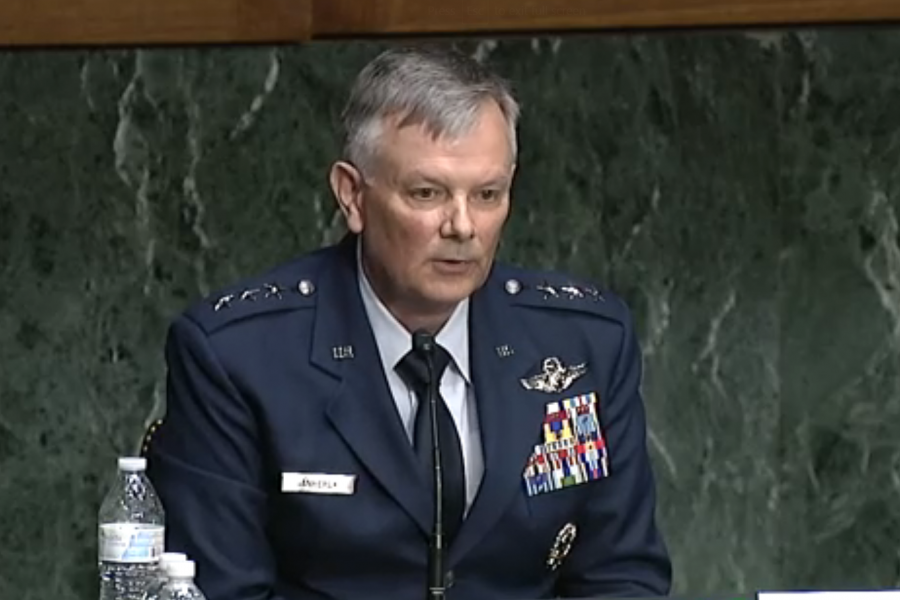Tracking and countering advanced cruise missiles developed by Russia and China needs to be a top priority for U.S. Northern Command, the nominee to lead the organization told lawmakers July 28.
USAF Lt. Gen. Glen D. VanHerck, currently the director of the Joint Staff, said during his Senate Armed Services Committee confirmation hearing that, if confirmed, his No. 1 job will be developing improved “domain awareness” to counter cruise missiles. The response highlights an ongoing effort within North American Aerospace Defense Command and the Air Force to test modern radar systems, and to update how it handles missile threats.
“We have to be able to detect those threats. If you can’t detect them, we certainly can’t defeat them, and you can’t deter them,” he said. “I would place that at the top of the priority list.”
In recent years, Russia built up its cruise missile portfolio and coupled that with an evasive submarine fleet. China and North Korea are improving their own missiles as well, with Pyongyang working toward weapons that can hit the U.S.
“I would expect a very dynamic environment,” VanHerck said. “Over 32 years of service, I’ve never seen the strategic and dynamic national security challenge that we have today.”
VanHerck said North American Aerospace Defense Command is embarking on an analysis of new ways to defend against cruise missiles. Those discussions will include NORAD’s Canadian partners as well.
The Pentagon is testing new technology to keep tabs on ballistic and cruise missiles, such as the Arctic Over-the-Horizon Radar that the Air Force Research Laboratory has installed at Camp Grafton, N.D. VanHerck hasn’t yet been briefed on the results of those tests.
“Anything that enhances our capability for domain awareness is going to be crucial, specifically with regards to ballistic missile and cruise missile capabilities at longer range,” he said with a nod to competition in the Arctic and beyond. New tools should be more accurate and show what missiles are decoys and which are true threats.
NORTHCOM and the Missile Defense Agency are expecting responses next month to a request for proposals for the Next-Generation Interceptor to replace the Ground-Based Midcourse Defense System as a key tool to take out incoming ballistic missiles. VanHerck said that, in conversations with MDA, they have determined that NGI could be ready for operations sooner than the 2030s.
“NORTHCOM’s No. 1 requirement was timing and sequencing of the Next-Generation Interceptor,” VanHerck said. “We’ll potentially see [it] move further to the left.”
In the meantime, NORTHCOM and MDA are working to extend the Ground-Based Midcourse Defense System’s service life and upgrade its abilities. MDA and NORTHCOM are also planning tests this winter on regional missile defense systems that could back up the GMD in case of emergency. Tests will focus on the Army’s Terminal High-Altitude Area Defense system and the Navy’s SM-3 as added protection.

